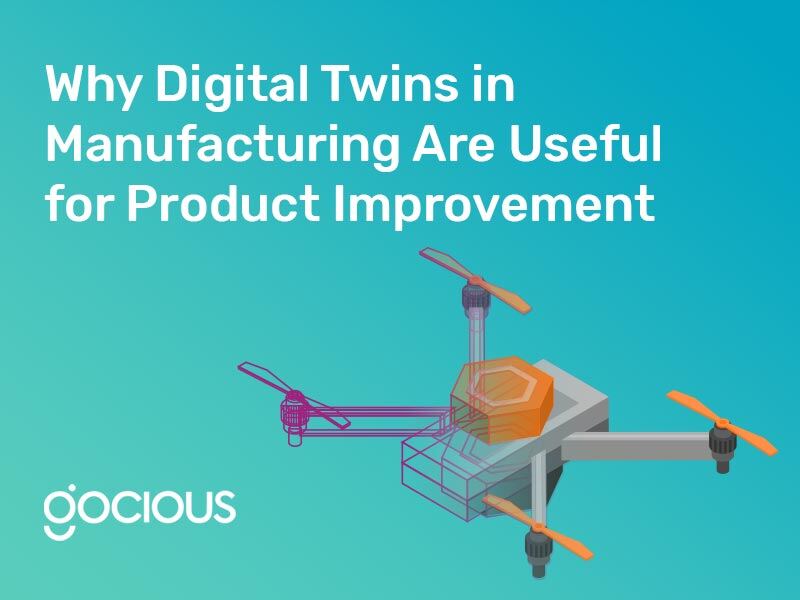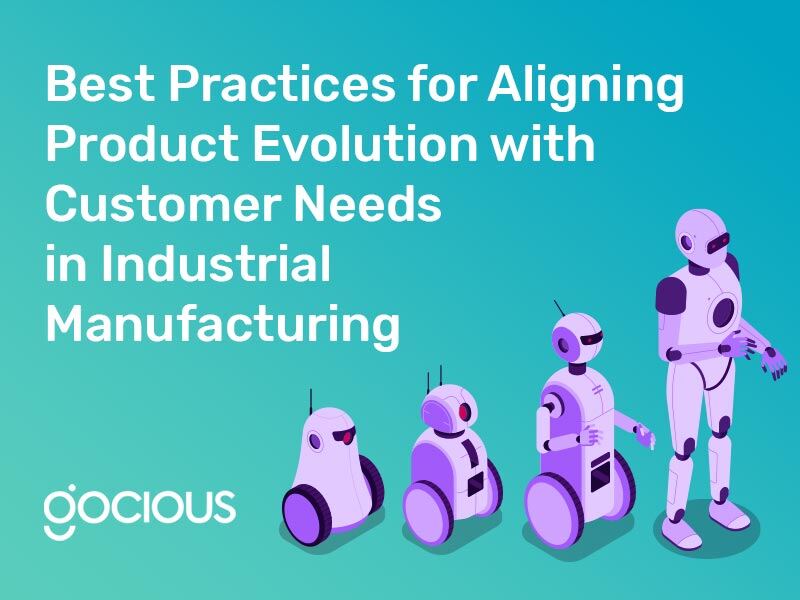
Subscribe to our blog
Ready to improve your roadmapping process?
Curious about how Gocious can help your manufacturing team transform its Product Lifecycle Management strategy? Let’s schedule a call to explore!
Product Management Articles
Supporting Innovation in Medical Equipment Manufacturing with Strategic Product Planning
Innovation drives the medical equipment industry, pushing boundaries to create devices that improve patient outcomes, streamline healthcare delivery, and enhance quality of life. Yet, innovation in this sector needs to be more straightforward. Manufacturers must navigate a labyrinth of regulations, market demands, and technological advancements—all while ensuring safety and efficacy.
Why Digital Twins in Manufacturing Are Useful for Product Improvement
Digital twins in manufacturing rapidly emerged as one of the most impactful innovations today. They’re used in everything from vehicles to machinery to electronic devices because they can capture user data without the need to be in their presence.
The Road to Digital Transformation in Manufacturing and How Gocious is Helping Lead the Way
The road to digital transformation in manufacturing is a journey toward greater efficiency, agility, and innovation. As manufacturers face mounting pressures to keep pace with rapid technological advancements and evolving market demands, adopting a strategic digital approach becomes essential. From product development to the manufacturing floor, companies need implementation product roadmaps as well as a suite of tools that support their digital goals.
Scaling Product Portfolios: Gocious Solutions for Automotive OEMs
The automotive industry is in the midst of a profound transformation. With rapid advancements in electric vehicles (EVs), autonomous driving, and smart technology, Original Equipment Manufacturers (OEMs) are managing increasingly complex product portfolios.
7 Essential Technologies Manufacturers Can Use in Digital Transformation
Digital transformation is no longer a lofty ideal in the manufacturing sector but a necessity. As industries rapidly evolve, manufacturers face ever-increasing pressure to adopt technologies that improve efficiency, reduce costs, and ensure adaptability. Digital transformation is the integration of advanced digital technologies to revolutionize how companies operate, from production to supply chain management.
Transforming Strategic Product Portfolio Management: The Gocious Advantage
Introducing New Plan Templates and Task Management Features
At Gocious, we’re committed to creating an all-in-one solution for strategic portfolio management. With our latest updates, including plan templates and comprehensive task management features, we’re closing the gap toward a complete Product Lifecycle Management (PLM) tool that empowers product managers to connect siloed areas, manage tasks across the lifecycle, and streamline their strategic planning. Here’s how these new features work and how they can benefit your teams.
Mastering Product Portfolio Management: 5 Crucial Benefits Gocious Delivers
Clarity, Control, Customer-Centric Success
Strategic product portfolio management provides the clarity and control required to adequately prioritize development initiatives and align innovation with market demands and long-term business goals. With clear portfolio oversight, companies can keep their teams aligned to strategic objectives, better address risks, and stay informed on market shifts.
Best Practices for Aligning Product Evolution with Customer Needs in Industrial Manufacturing
Many industries are adapting to evolving technology and innovation, especially in manufacturing. It's the same story with industrial manufacturing. Embracing new technologies and responding to shifting customer demands is essential to stay competitive in today's marketplace.
Product Forecasting: How to Build Forecasts that Shape the Future of Your Company
Forecasting your product line's future is not just an exercise in planning—it's critical to your company's survival. A well-crafted forecast helps you anticipate market demand, adapt to shifting customer preferences, and stay ahead of your competitors. Whether you're managing software products that evolve with new features and updates or physical products that require eventual sunsetting, product line forecasting empowers you to make data-driven decisions.
How to Keep Product Management Teams in Sync with Product Roadmap Software
Creating, producing, and managing products involves many important players, from product and engineering organizations to executive and go-to-market teams. One challenge is keeping all these stakeholders informed when it matters most. Part of this responsibility lies with product management teams, and with the right tools to help them, keeping each other and the rest of the organization in sync becomes easier.
The Top Frustrations Manufacturers Face in Product Development
And How to Fix Them with Product Roadmap Software
Bridging the gap between innovation and tangible business results is crucial in manufacturing. This success requires a balance of user-friendly design, quality engineering, and effective sales strategies. Companies must balance these competing needs, all while ensuring that their products meet quality standards, market demands, and cost efficiency.
To Fund or Not to Fund: 5 Helpful Questions to Ask About a Struggling Product Line
In the lifecycle of any product portfolio, there comes a time when certain products underperform, leaving decision-makers with a difficult question: Should you continue to fund or phase them out? Underperforming product lines can drag down your portfolio's overall performance, siphon resources, and reduce profitability. Yet, there's also the potential that, with the right adjustments, these products could regain their footing. So, how do your product teams make this decision?













